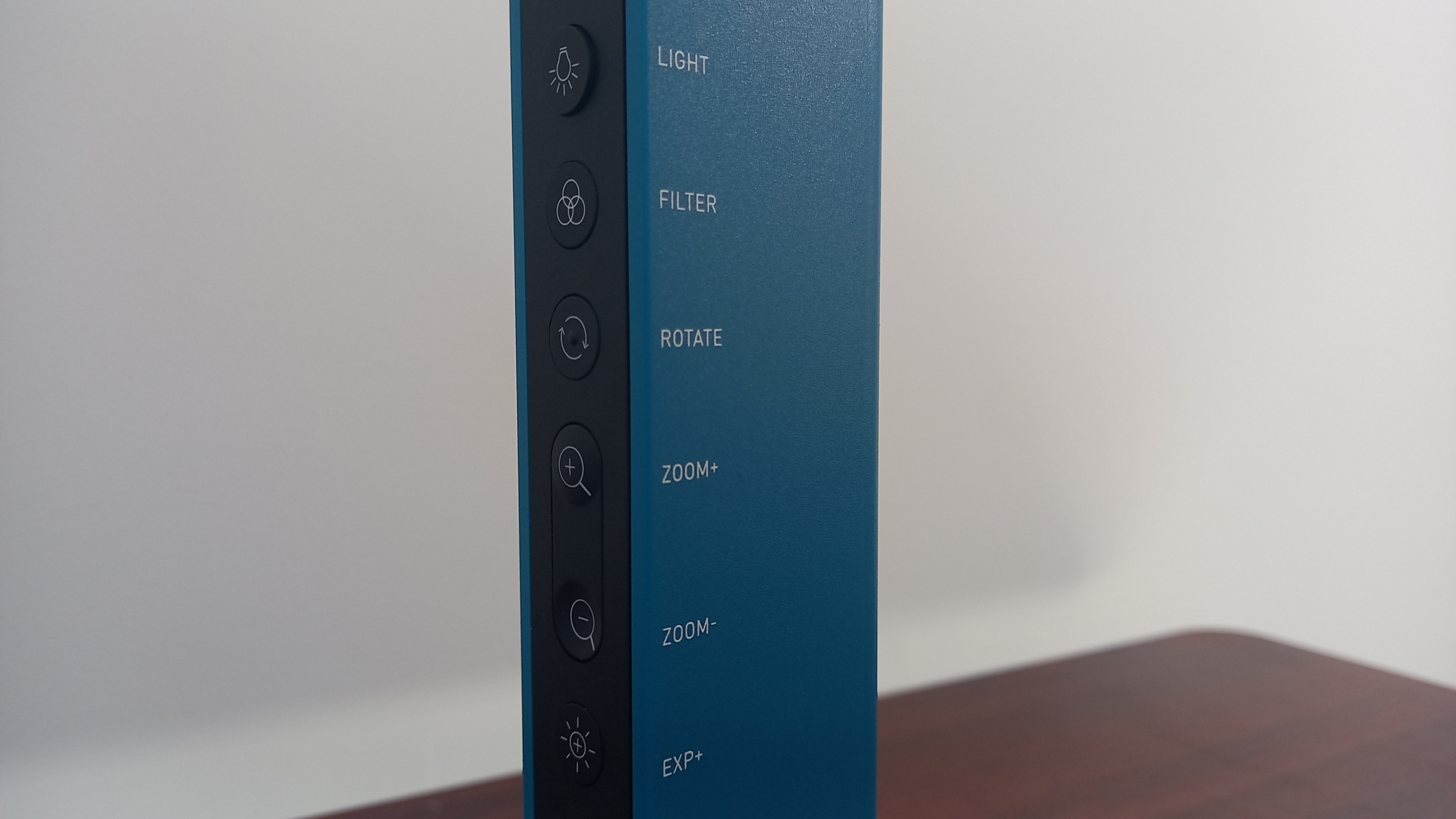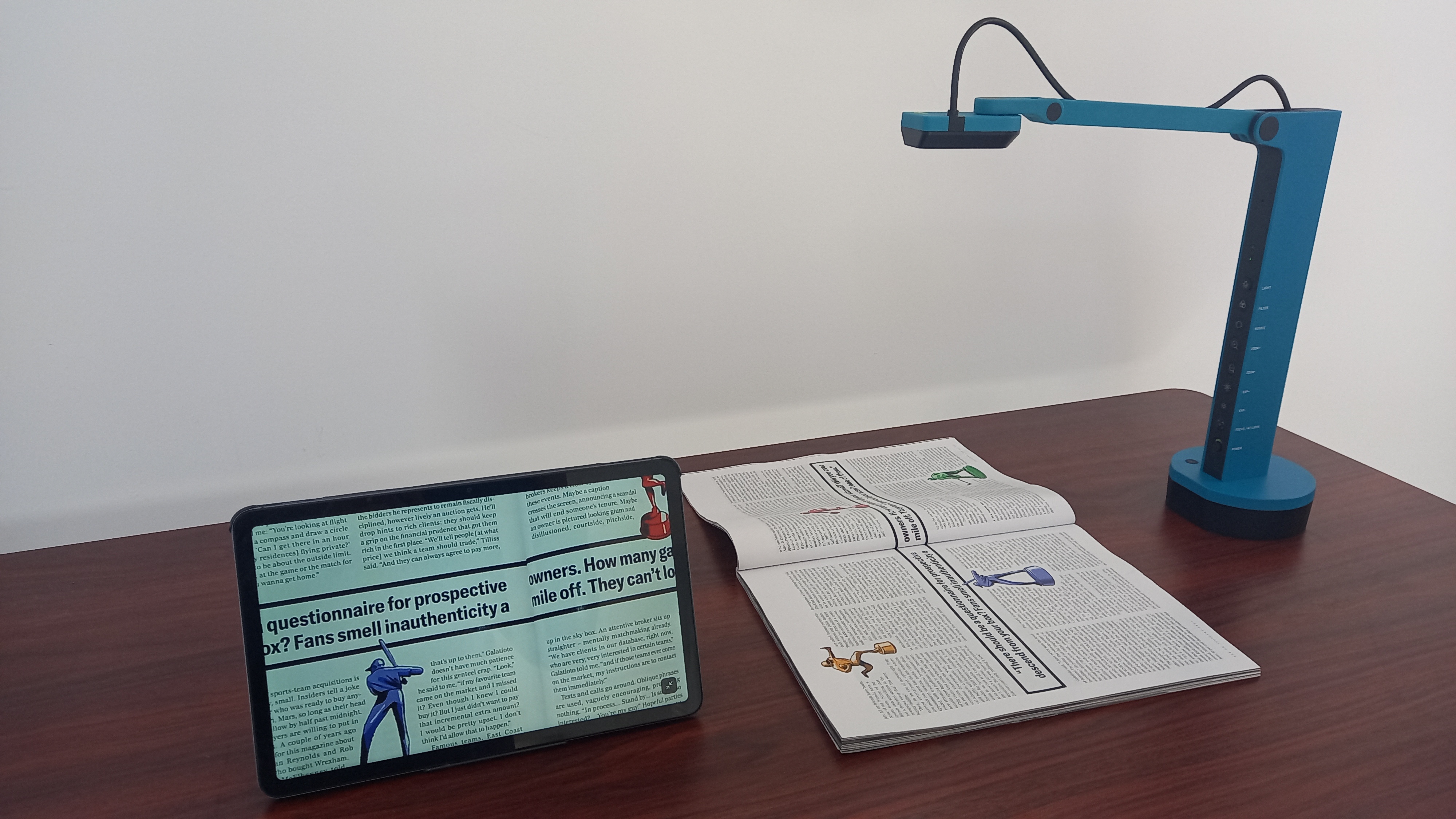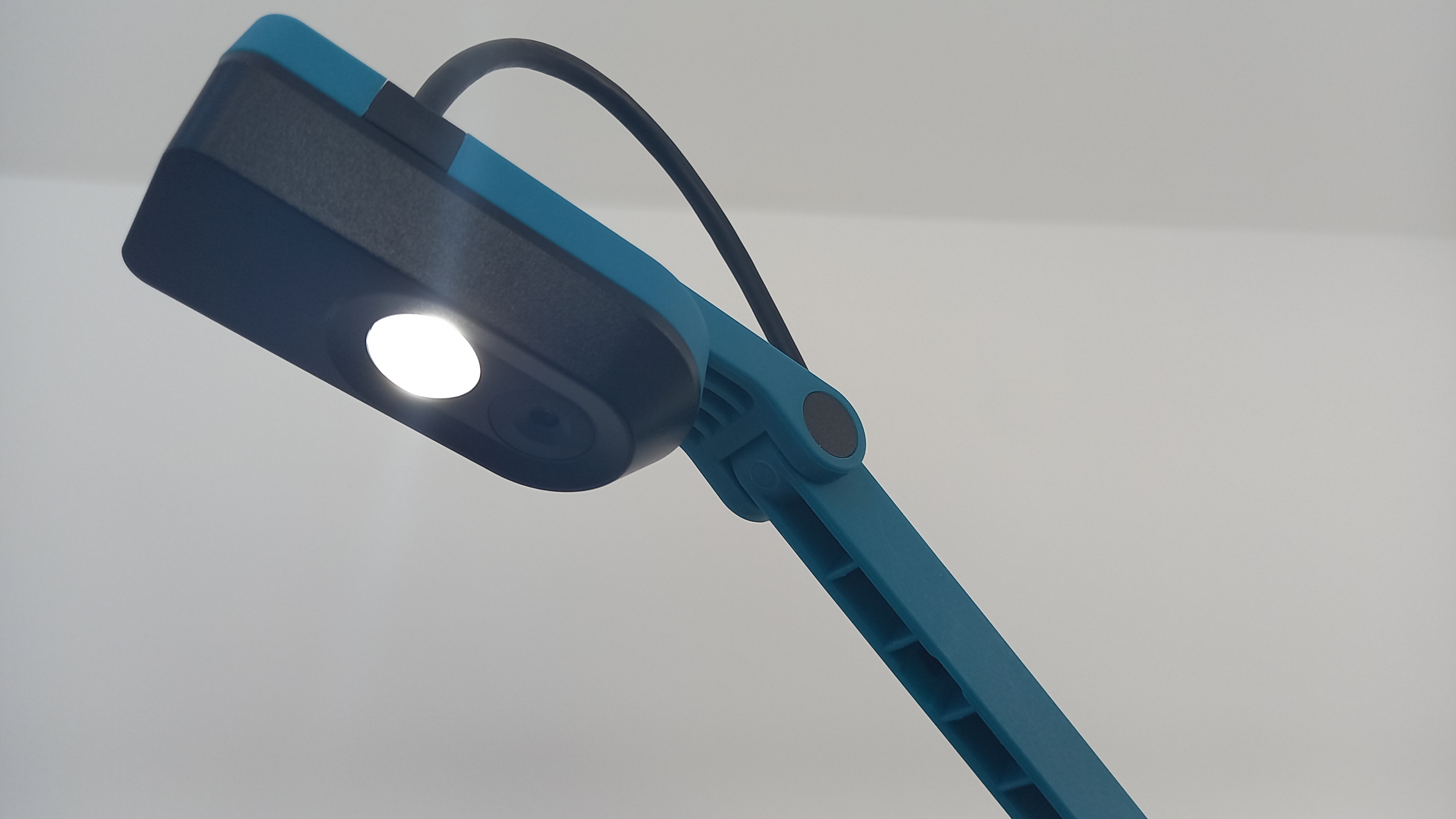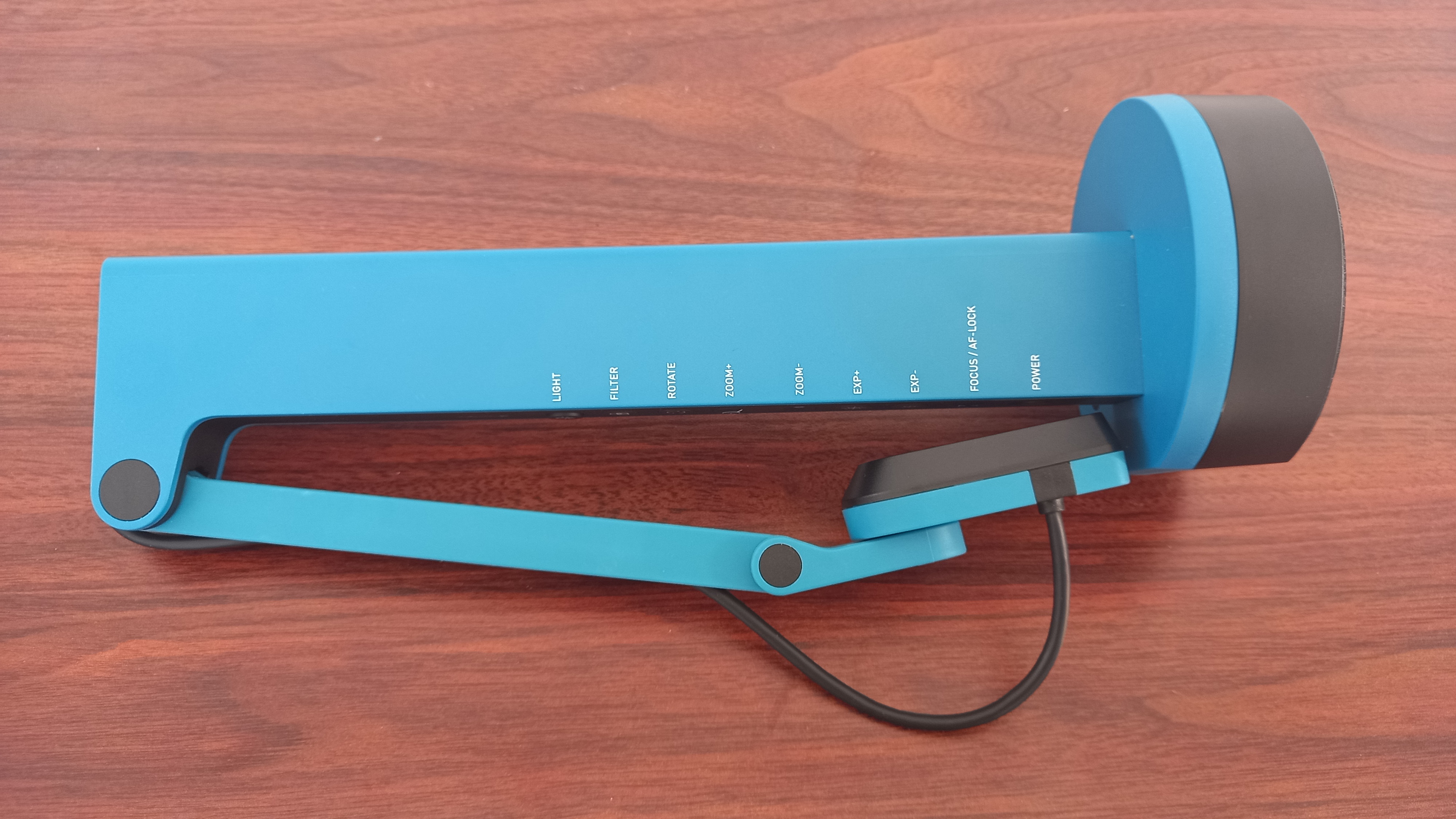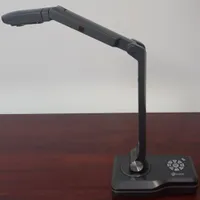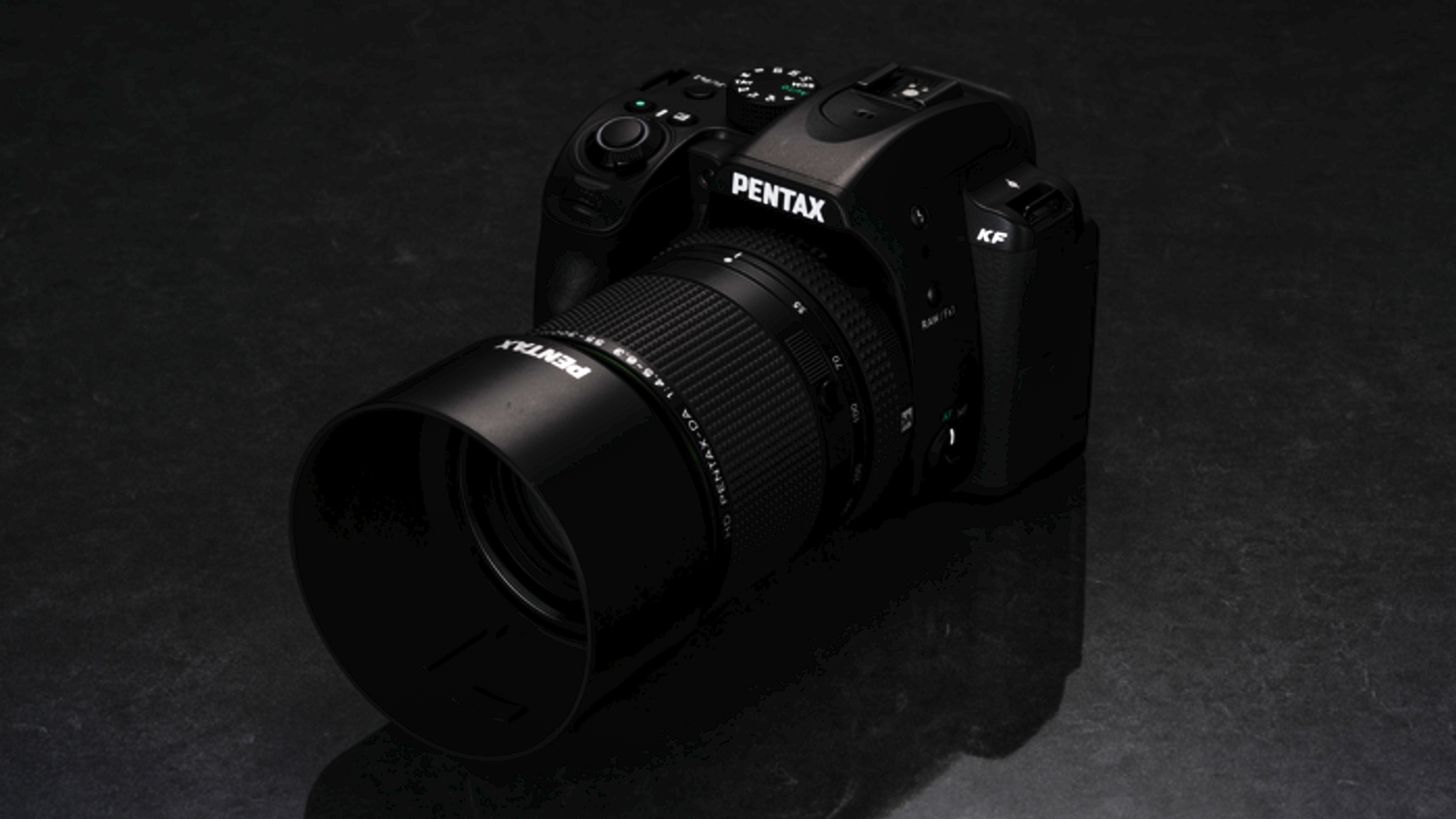Digital Camera World Verdict
The Ipevo VZ-X document camera is brilliantly made, offers high-spec picture quality and great software. And when used with a wired connection, it does an impressive job of displaying documents, book pages and objects on a laptop or TV. Sadly, on its most distinctive feature – the ability to stream wirelessly – it performed poorly, so I can't recommend it for these purposes.
Pros
- +
Connect wirelessly to laptop
- +
iOS and Android apps
- +
Battery operation
- +
Functional buttons are fantastic
Cons
- -
No Wi-Fi with TV or projector
- -
Wi-Fi is patchy in practice
- -
HDMI cable not included
Why you can trust Digital Camera World
A document camera, aka visualizer or digital overhead projector, is an imaging device that consists of a camera lens, a light source, and a platform or stage area. The camera captures images or video of objects or documents placed on the stage, and projects them onto a larger screen or surface.
The best document cameras are commonly used for used in classrooms, offices, presentations, conference talks and teaching online. You can also use them to capture photos and videos, and even an external webcam.
There are a number of document cameras around the $100-$200 mark, but the Ipevo VZ-X comes in around twice the price. So what do you get in return? Well, the main USP here is the option, if you choose, to operate entirely wirelessly. If that sounds good to you, then read on.
Ipevo VZ-X: Specifications
| Sensor | 1/3.2" CMOS |
| Camera | 8 MP Full autofocus lens |
| Max resolution | 3264 x 2448 |
| Frame rate | 30fps |
| Shooting area | 16:9: 11.14 x 19.72 inches (283 x 501mm); 4:3: 14.29 x 19.01 inches (363 x 483mm) |
| Outputs | HDMI, USB, Wi-Fi |
| Dimensions (folded) | 4.57 x 4.25 x 12.68 inches (116 x 108 x 322mm) |
| Weight | 2.58lbs (1.17kg) |
| Dimensions | 32.64 x 21.43 x 1.87 cm (12.85" x 8.44" x 0.74") |
Ipevo VZ-X: Build & Handling
I instantly fell in love with the look and feel of the iPevo VZ-X. Its blue colour is both distinctive and attractive. It's lightweight and portable. And best of all, there are 12 buttons down the one side, which are helpfully labelled on both adjoining sides. That's the kind of smart design thinking that really makes a difference to ease of use in practice. These buttons allow you, for example, to zoom in and out of your subject, rotate the image, turn the light on, or apply a filter, quickly and easily.
Like most document cameras, the VZ-X comes with a multi-articulated arm and rotating head that allow you to shoot from different heights, angles and orientations. This folds up beautifully at the end of each session, making it easy to store.
Ipevo VZ-X: Setup & Connectivity
Setting up the VZ-X was something I found pleasantly straightworward. For using it on a laptop, you just plug it in with the supplied 4.90ft (150cm) USB-C to USB-A cable, download the Visualiser software from Ipevo's website, and you're ready to go. The device will then get its power from the laptop so you don't have to worry about the battery. You can also charge the battery from a wall socket but not that the USB cable doesn't come with a plug, so you'll have to provide that yourself.
Other ways to use the VZ-X are by connecting it to a TV or projector using an HDMI cable (again, you'll have to supply that). There's no output for a VGA monitor, though, so if you want to use one of those you'll need to go elsewhere. (In which case, we'd recommend the Joyusing 508V.)
The best camera deals, reviews, product advice, and unmissable photography news, direct to your inbox!
What you can do with the VZ-X, though – and this is pretty special – is connect it wirelessly to a laptop, Chromebook, or a mobile device such as a phone or laptop. For the latter, you just need to download an iOS or Android app from the relevant store.
Ipevo VZ-X: Performance
Using the USB connection, I found the Ipevo VZ-X worked very well. The Visualizer software – not to be confused with the Joyusing document camera software, which is also called Vizualiser – is simply fantastic. It packs in a ton of features in a way that's well organised and makes everything easy to find.
I won't list all the tools here, but suffice to say that whether you want to tweak your picture, zoom in on a particular section, add annotations, apply filters or record or live stream video, you're very well covered.
The 8MP sensor offers a maximum resolution of 3264 x 2448, which is nearly 4K and certainly provided sufficient picture detail, even when I zoomed in. The device was simple to manipulate and offered enough working area to capture everything I needed. The included light is basic, but worked well enough. And ultimately, the camera did what it needed it do, and did it well.
When it came to the HDMI connection, though, this device started to seem a little less premium. For a start, HDMI connection doesn't supply VZ-X with power so you have to make sure that there's sufficient battery power for your session. I also discovered the built-in mic is only functional in USB mode.
As for the wireless connection, there's both good and bad news. The good news is, it's easy to set up and works well as long as the connection remains stable. My connection, unfortunately, kept cutting out. That meant the software instantly switched to my webcam, which would have been instantly embarassing had I been using this to teach or present to a conference.
There seemed to be three things that triggered this: the distance of my laptop from the VZ-X became too great, the battery life of the VZ-X dipped too much, or I tried using the buttons on the device.
Most surprisingly, even when I was at full battery power and not using the buttons, the Wi-Fi sometimes dropped out at less than 3 feet / 1 metre away: much less than the 33 feet / 10 metres coverage promised by the manufacturers. Perhaps my home has some unique wireless weirdness going on, but searching the customer reviews online I found similar complaints from some others.
Ipevo VZ-X: Verdict
I fervently love the physical design of this document camera and dearly wanted it to work brilliantly. In most respects, it does, particularly when connected via USB to a laptop. Unfortunately, in my experience, it fell down in delivering its main promise, as a wireless device, and was too inconsistent for me to recommend using it for these purposes. It's also worth noting that the wireless option isn't even available with TVs or projectors, so if you're speaking in a large room, that's not going to be much help.
Basically, then, that leaves you with a pretty decent document camera, but one that's much more expensive than its wired-only rivals. So until it comes down in price to less than $200, I'd advise most people to save their cash. You'd be better off with the Ipevo VX-R which offers similar specs without the Wi-Fi, at a lower cost.
Alternatives
The Joyusing V508 document camera is cheaper than the Ipevo VZ-X, yet its build quality, high resolution, advanced features and overall performance are pretty much on a par. It also comes with a remote and an HDMI cable and a VGA connection for older monitors. No, you can't cast via Wi-Fi or connect to mobile devices, but if they aren't deal-breakers, it's superb value for the price.
For an even cheaper alternative, check out the Hue HD Pro. For under $100, you get a basic document camera that's surprisingly surprisingly sturdy and features a flexible neck you can point anywhere. It's a particularly great choice for teachers of young children.
Tom May is a freelance writer and editor specializing in art, photography, design and travel. He has been editor of Professional Photography magazine, associate editor at Creative Bloq, and deputy editor at net magazine. He has also worked for a wide range of mainstream titles including The Sun, Radio Times, NME, T3, Heat, Company and Bella.

